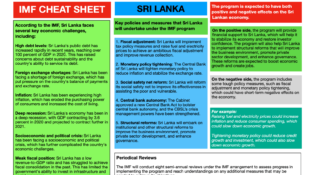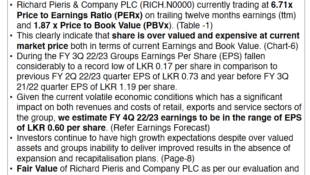This excerpt, especially the last bit about the criminality of profit in excess of 300% kept haunting me since 2015, when the "Central Bank Bond Scam" became public knowledge. According to D.E.W. Gunasekera, the former Chairman of Committee on Public Enterprises (CoPE) that led the investigation of the first bond scam perpetrated on February 27th, 2015, Perpetual Treasuries Limited (PTL), one of the two prime perpetrators of the scam, had recorded profits of an estimated 1,500% from one transaction (also cited in Ferdinando, January 1, 2019). He interrogates how, a nascent company that began with only Rs. 300 million in capital is capable of making a profit of such magnitude. He further states that PTL profited Rs. 4,652 million from the second bond scam that was perpetrated on March 29th, 2016. These figures, which have been in wide circulation in the media in the past few years, motivated me to revisit Marx’s original claim that earning such excessive profits is a criminal act. What makes the perpetrators of the bond scam – Arjuna Mahendran (former Governor of the Central Bank) and PTL, led by Mahendran’s son-in-law Arjuna Aloysius – criminals of the worst degree, is that together, the family enterprise robbed the hard-earned rupees of the vast majority of working- and middle classes, saved in the Bank of Ceylon and the Employee Provident Fund (EPF).
Five years and five reports later (two CoPE reports, report of the Auditor General to the Parliament, Report of the Presidential Commission of Inquiry, and the latest forensic audit), the Attorney-General’s most recent directive to the Police to obtain warrants to arrest those involved in the bond robbery is a welcome development. A lot has been written on the Central Bank which was robbed by its own Governor in broad day light. Experts, journalists and politicians have commented on the magnitude of corruption, technical aspects and the process of the scam as well the sequence of events that led to it. Ajith Nivard Cabraal, the former Governor of the Central Bank published a book titled The Great Bondscam Cover-up (2019) providing episode to episode expose of the ‘bond saga’. While this article may regurgitate some of what was said before, it is primarily an attempt to understand the political economy of the Central Bank robbery. The first part of the article provides the alignment of interests representing ‘Finance Capital’ in the political leadership and the bureaucracy, and the structural institutional changes that are put in place to advance such interests. This narration focuses on the first bond scam. The second part illuminates the extraction of profits and the mode of accumulation by the financial capitalist class, with a focus on the second bond scam. Taken together, the robbery is a case study that illuminates the extraction of profits and state capture by the financial capitalist class which is 0.001% of the world population, from the rest of the world.
Part I
The financial capitalist class that robbed Sri Lanka’s Central Bank arguably includes two primary groupings: 1) those who own and/or control major global financial institutions and their local affiliates (corporate faction – represented by PTL, its owner Arjuna Aloysius and its CEO Kasun Palisena) and 2) bureaucrats and politicians (state faction – represented by Arjuna Mahendran, former Prime Minister Ranil Wickramasinghe and former Finance Minister Ravi Karunanayake and others). These two types of actors form the core of the financial capitalist class. Two primary propositions can made about the financial capitalist class. First, it is a class which benefits from its connections to individuals and institutions located in the global ‘financial pyramid’ and more or less in control of the processes of globalization. At the top of this pyramid are the Transnational Corporations (TNCs), the large banks, the investment banks, the insurance companies, the operators of investment and pension funds, and the cream of the crop of large financial capital funds, which manage the resources of the richest men on the planet: hedge funds and private equity funds.
Second, the dominance of finance capital can be primarily attributed to their strong influence on government policies on financial governance. The former Prime Minister Ranil Wickramasinghe is the most powerful political agent in this regard. He is a loyal lieutenant of the Mont Pelerin Society, a political project founded by Friedrich von Hayek and others that propagated "neoliberalism" to advance the interests of the ultra-rich. Most members of Mont Pelerin are also "neoconservatives", who have been powerful in shaping American foreign policy for the last generation. Soon after Wickramasinghe was sworn in as the Prime Minister of Sri Lanka on January 8th, 2015, he took control of the Central Bank under his portfolio. This move is not only unprecedented, but also unlawful. According to the monetary law, the Central Bank must come under the purview of the Minister of Finance (who, at the time, was Ravi Karunanayake). Kabir Hashim was appointed as the Minister of Public Enterprises which made him the subject minister in charge of state banks.
Ranil Wickremesinghe’s second move was to bring in his friend Arjuna Mahendran, a non-citizen, as the Governor of the Central Bank. This was the beginning of a carefully orchestrated plan to privatize state-managed funds (such as the EPF) and state banks or to dilute them, and strengthen the financial capitalist class in Sri Lanka. His third move was to strategically eliminate the direct placement system for the issuance of government bonds in order to borrow money in the name of transparency. A brief digression about the history of the issuance of government bonds is necessary here.
A Treasury Bond "is a certificate issued by the Central Bank in acknowledgement of a borrowing done for the government from somebody in the market" (Cabraal 2019, p.18). It is much like a fixed deposit certificate that we as individuals get from a bank. When bonds are issued, the Central Bank’s Public Debt Department (PDD) issues a press notice calling for bids from dedicated primary dealers, four of which belong to the state sector - Bank of Ceylon, People’s Bank, National Savings Bank and EPF. The auctions are done through electronic means where the primary dealers and EPF would submit bids by using telephone lines to the PDD (Wijewardena 2017). The issuance of government bonds to borrow funds for the Treasury was first introduced in 1997, during Mrs. Chandrika Bandaranaike Kumaratunga’s presidency.
The Central Bank Governor at the time, Mr. A.S. Jayawardena put in place both the direct placement system and the auction for the issuance of bonds. In the heat of the civil war at the time, the state could only borrow internally to finance the war and other state functions. Although countries like China, India, Pakistan and Russia provided support in the form of weapons and other military assistance, no country offered direct financing. Given these circumstances, compounded with a looming budget deficit, depleting foreign exchange reserves, and rising interest rates, the state resorted to the direct placement system of issuing bonds, and it borrowed predominantly from state-owned funds and financial institutions. Governor Jayawardena was concerned that there was a possibility of some primary dealers seeking to jack up interest rates if the process was unregulated, as it would be in an auction. He wanted a system that could prevent such behavior because the duty of the Central Bank is to raise money for the government at the cheapest cost while avoiding sudden hikes in interest rates. Hence, the Central Bank used its discretionary power as the borrower of funds on the optimal amount it could raise through auctions without causing an unwarranted increase in interest rates. The direct placement system did not offer an undue advantage to any primary dealer as the requirement was to invest around the market rates. In Governor Jayawardena’s words, "there is no competitive market here because the licensed primary dealers are a group of oligopolists who can drive the rates to their advantage.
The Central Bank, while seeking market development in the long run, has a right to prevent a situation that would lead to unfair practices by a few primary dealers who might have access to inside information. Hence, market development means market taming too" (Jayawardena 1997, also quoted in Cabraal 2019, p.22).
Soon after Ranil Wickremesinghe became the Prime Minister in 2015, he started demonizing the direct placement system in the name of transparency in many platforms, including the parliament. Obediently following the PM’s orders, Mahendran abruptly terminated the "direct placement" component of the "auction cum direct placement" system, which has been the practice since 1997. The termination of the direct placement system was carried out without adequate technical advice from- or broader consultation with the senior management of the Central Bank or the PDD. The Central Bank thereafter moved to an "auction only" policy that gave free hand to primary dealers with inside information to capture the market at the expense of others. This was the first institutional maneuver that was carried out by Mahendran with the collateral purpose of facilitating insider trading. While Ranil Wickremesinghe successfully led the political ‘marketing’ campaign against the direct placement system, Mahendran used his power to institutionalize it. The duo packaged direct placement as "private placements", a misleading label that suggested the prior system benefitted a handful of primary dealers at the expense of others.
Up until 2015, 90% of the borrowings upon the issuance of bonds, was from the state sector. Prior to the elimination of the direct placement system which paved the way for private financial capital to bid for government bonds in an unregulated manner, the practice was to tread carefully and conservatively in borrowing from the private sector. The previous practice was in many ways progressive and it prevented financial capitalist class from reaping excessive profits from the war effort. However, with the "auction only" system, the issuance of bonds benefitted a particular "connected" primary dealer who is privy to inside information, like PTL, the company owned by Mahendran’s son-in-law. By the time the first bond robbery was perpetrated in February 2015, there were 16 public- and private financial institutions registered to participate in the bond auctions. PTL, registered in 2014 with the Central Bank, was the newest entrant.
As unearthed by CoPE sub-committee headed by D.E.W. Gunasekera, on February 27th, 2015, Arjuna Mahendran led the first bond auction deviating from past practice and without the approval of the Monetary Board of the Central Bank or the Cabinet. This was his second institutional maneuver that facilitated windfall profits for PTL. The Central Bank announced that it would be issuing Rs. 1 billion worth of 30-year treasury bonds, with an interest rate of 12.5%. On the day of the bond robbery, Governor Mahendran made an illegal intervention and directly instructed the Superintendent to increase the borrowing amount to Rs. 20 billion, even though the initial (and legal) requirement was for Rs. 1 billion. As the first bond investigation reveals, the officials of the Public Debt Department (PDD) protested the instruction of the Governor, which brought down the borrowing amount to Rs. 10 billion. Meanwhile, 12 minutes before the auction closed, PTL had instructed Bank of Ceylon to bid Rs. 3 billion at 12.5%, Rs. 5 billion at 12.75% and Rs. 5 billion at 13% at the auction on behalf of PTL. The Bank of Ceylon adhered to PTL’s instructions and their bids were accepted by the Central Bank. PTL had placed direct bids worth Rs. 2 billion and the rest via the state-owned Bank of Ceylon. Reportedly, 50% of the Rs. 10 billion ended up in the hands of PTL from the first bond deal. All bids by PTL and Bank of Ceylon were placed at an unusually high interest rate, as there was an assurance that the bids would be accepted.
What is revealed by the first bond robbery is the alignment of interests in favour of private finance capital, at the expense of public funds. The alignment requires the coming together of powerful political actors and likeminded bureaucrats joining forces with the financial capitalist class. With the elimination of the direct placement system, the government demonstrates a clear deviation from the prior and conservative practice of issuing treasury bonds. The sequence of decisions taken by Mahendran, with the political leadership of Wickramasinghe and possibly the insider dealing led by Ravi Karunanayake, paved the way to ‘liberate finance capital’ by legitimating unethical practices such as insider trading, in the name of transparency and good governance. The system of "auction cum direct placement" was restored on 27th July 2017 amidst continued interrogation by the public and experts. However, this move came in much later, after the government and the public had suffered massive losses due to the bond robberies perpetrated in February 2015 and March 2016.
By Vagisha Gunasekara
(Vagisha Gunasekara is a political economist in the Department of Social Studies at the Open University of Sri Lanka.)
 would enable you to enjoy an array of other services such as Member Rankings, User Groups, Own Posts & Profile, Exclusive Research, Live Chat Box etc..
would enable you to enjoy an array of other services such as Member Rankings, User Groups, Own Posts & Profile, Exclusive Research, Live Chat Box etc.. 
 Home
Home

















